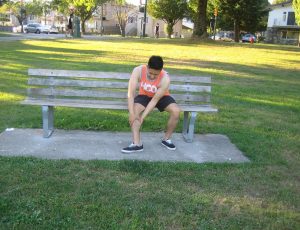A bone bruise is also called bone contusion which is is an area with tenderness due to traumatic injury. These bruises are classified as sub-periostal hematomas which can be very painful and usually persists for several weeks.
[youtube url=”https://www.youtube.com/watch?v=RHmGPYD94wI”]A bone bruise causes severe pain and can result to a fracture. A bruised bone causes severe pain than the swelling of a bruise in the muscle or on the skin. The bone is made up of interconnected fibers with deposits of calcium between spaces in the fibers. These fibers can break when the bone is hit by something very hard.
A serious injury breaks great amounts of fibers which can cause a fracture of the bone and when only few fibers are damaged or injured this will result to a bruise bone. A bone bruise can be refered to multiple traumatic bone lesions which are different from sub-periosteal hematomas.
There are 3 types of bone bruise – the sub-periosteal hematoma which is characterized by build up of blood under the periosteal of the bone, inter-osseous bruising which is a repetitive strong force placed on the bone damages the bone marrow and blood supply in the area is also damaged that result to internal bleeding; and the third type is the subchondral lesion which is a severe force which causes the separation of the cartilage from the bne and result to internal bleedng. This condition is common in basketball players and usually affects the bones in the feet.
Symptoms of a bone bruise

- Swelling of the area caused by injuries.
- Severe pain can be felt and eventually becomes worse
- The affected area becomes stiff
- Sometimes, blood accumulates in the affected area and can result to a blood clot. If the skin becomes red, inflamed and the skin is warm to touch, it is vital to seek medical help immediately.
Treatment
- Take plenty of rest and avoid physical activities and sports until fully healed. A minor bone bruise heals in a few weeks and a more severe bruise takes several months to heal.
- Apply an ice pack on the affected area. Simply place ice cubes in a plastic bag and wrap it in a piece of cloth or towel and apply it on the affected area for 20 minutes at 3-4 times every day.
- If the bone bruise happens on the foot or leg, elevate the leg above the level of the heart to minimize the swelling.
- Use crutches as much as possible if it is a leg injury to prevent putting the weight of the body on the injured leg. Use of crutches lessens the pain and considered manageable.
- Use a splint for the legs. Avoid putting weight on the affected leg when using a plastic splint and prevent it from getting wet. Take off the splint from the legs when taking a bath or sleeping at night.
- Take the prescribed pain medication to lessen the pain, discomfort and fever.
